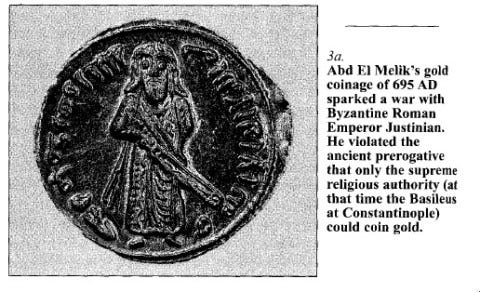Freedom of Information. Housing Wealth, Solvency Ratios and the Magic Money Tree. SKIN IN THE GAME
I have been analysing the distribution of Housing Wealth and net Equity across percentiles for...
Freedom of Information. Housing Wealth, Solvency Ratios and the Magic Money Tree. SKIN IN THE GAME
AUTHOR:ROGERGLEWIS PUBLISHED DATE:JUNE 5, 2023 1 COMMENTON FREEDOM OF INFORMATION. HOUSING WEALTH, SOLVENCY RATIOS AND THE MAGIC MONEY TREE. SKIN IN THE GAME
I have been analysing the distribution of Housing Wealth and net Equity across percentiles for our Silverm@ix downsizer Brand as we have a number of new developments currently being specified for release next year.
Obviously as property developers we are interested to know which way the property market is headed in general and particularly at segmentation of Consumer Household requirements and the main drivers making up Effective demand.
As “Cash Buyers” make up roughly a third of UK property transaction their activity and also the available property equity for mortgages buyers are important metrics to know. In 2014 and 2015 the number of cash buyers peaked at 33.41% this had dropped back to 27% by Jan 2021 but will likely rise as the market goes through the current correction. The level of property wealth ( Equity) per percentile is an important figure to know. The discrepancy between this 2nd of june foi request and my own based upon 2014-2016 figures and the one based on 2018 -2020 figures is of some concern . I wrote to the ONS by e mail this morning.
Uk Housing wealth by percentile FOI request 2 june 2023
Based on individual housing wealth total and using the 2016 population figure the total household wealth given would put UK housing equity at £1,242,500,001,600,000 This is a huge number being £1.242 quadrillion
UK Housing wealth by percentile FOI request 3 June 2023
I previously downloaded https://www.ons.gov.uk/file?uri=/aboutus/transparencyandgovernance/freedomofinformationfoi/totalwealthbypercentilesandcomponents/finaltable.xls
Which gives an aggregate total housing wealth of 4.57 trillionwhich is much more with the actual levels of wealth reported by Savills in their housing wealth survey which had £8.6 trillion for 2022
Could you please check your figure there appears to be an error.
Thankyou.
Roger G Lewis BSc MRICS
http://realrld.com/
http://www.homeatix.net/
Real-Estate Land and Developments Limited
email: rlddevelopments@gmail.com
UK Mobile (+44) (0)7498880719
The Amount of Housing wealth Equity and the overall level of Mortgage lending in the economy is also of some importance.
Total risk-weighted assetsof which:Credit and counterparty risk£ billions£ billions
2,9402,1381 676mortgages57.00%78.40%
Mortgage Loans make up 57% of total Banks risk weighted assets and 78.4% of the Credit and counter party risk component of Banking sector regualtory capital requirements(BOE)
My Blog yesterday goes into more detail of Mortgage lending as a major component of the “Money Supply” Money is not a Stock but a Flow but the flow is regulated by the core debt upon which banks Weighted risk assets are based and hence a key component of Bank solvency is actually house prices.
Key findings
The outstanding value of all residential mortgage loans was £1,675.8 billion at the end of 2022 Q4, 3.9% higher than a year earlier (Table A). footnote[1]
1,675,800,000,000 Value of Outstanding Mortgages on Bank Balance Sheets
Secured against By Savills Figure for Jan 2022 £2,900,000,000,000 £2.9 Trillion of Value
1675.8/2900 = 57.786% LTV
If as some commentators Claim Values Fall by 35% in real terms
The Value of all Mortgaged Property would fall to 1.875 Trillion and the Loan to value ratio on Bank Balance sheets would rise to 88.9% This would have very severe consequences on the rating of Mortgage Debt held by banks as secured collateral for Tier 1 Basel 3 Solvency purposes.
Regarding Falling Prices at the End of 2021 “un-mortgaged owner occupiers continued to be the fastest growing housing tenure in 2021, up 12.0% on the year to reach a total of 3.3 trillion”.
53.2% of the UKs Residential Housing Stock in private ownership is not Mortgaged this figure suggests why Prices for Property are much stickier going down than going Up.
Skin in the Game and Moral Hazard.
According to Nassim Taleb, in 2009, the banking sector lost in 18 months all the profits it ever made since the beginning of banking. Is this true?
Is the sector as a whole up now since, say 1950? By how much? I can’t find any good data on this.
Join the discussion here.
This is a question I also wished to find data for and as with Javier´s answer I also remember Buffet saying the same thing about the Airline industry. My question arose out of a wish to establish how much skin is there in the game when Banks Bail out sovereigns and vice versa? To a large extent it would seem that neither in fact have much skin in the game and Taleb´s interview with the Library for Economic freedom and liberty examines this question and he again makes the claim of Banking over its history returning a net loss. So How much Skin do the Troika have in the Game..
JULY 17, 2015
I have been comparing Goldman Sachs and JP Morgan Institution Profile Page Goldman sachs
88. Common equity tier 1 capital ratio (calculated using advanced approaches)
10.71% JPM AND 12.61 GOLDMAN
89. Tier 1 capital ratio (calculated using advanced approaches)
12.08% JPM AND 14.17% GOLDMAN
90 Total capital ratio (calculated using advanced approaches)
13.65% JPM AND 16.33% GOLDMAN
What these Equity and Capital ratios tell us is that the Capital which is represented by collateral belonging to Borrowers is greater than than the level of Equity represented by shareholder capital at risk which would be termed equity at best there is 30% of real stuff at risk as it were with roughly half of the real stuff being actually the security offered up by the borrowers themselves the rest 70% is frsh air in a fiat money system and in a fiat money system based on debt its thin air at interest.
Yanis Varafoukis in his comments published on the EU Bail out states that 1 billion of the 87 billion for the so called Greek bail out will represent investment in the Greek economy proper.
The percentage of Capital ratios stated above does not address the question of what paper instruments count as Collateral for capital formation purposes for instance it takes no account of re hypothecated assets, one suspect there is much more double counting in the system than is health. The best description of this I have ever found is in Samuel Taylor Coleridges published diaries Table Talk.
Table Talk.
this from 27th April 1823.
The national debt has, in fact, made more men rich than have a right to be so, or, rather, any ultimate power, in case of a struggle, of actualizing their riches. It is, in effect, like an ordinary, where three hundred tickets have been distributed, but where there is, in truth, room only for one hundred. So long as you can amuse the company with any thing else, or make them come in successively, all is well, and the whole three hundred fancy themselves sure of a dinner; but if any suspicion of a hoax should arise, and they were all to rush into the room at once, there would be two hundred without a potato for their money; and the table would be occupied by the landholders, who live on the spot.
http://www.gutenberg.org/cache/epub/8489/pg8489.html
Lord Byron knew a thing or two about Greece I suppose we ought to ignore the neo liberal Economists and consult the romantic poets. Ezra pound curiously, not a Romantic Poet but poet non the less wrote a book A B C of Economics, famously tried for treason supporting Mussolini and Fascism in world war two if you read ABC of Economics you have to ask who are the fascists now?
Work without Hope
Lines Composed 21st February 1825
All Nature seems at work. Slugs leave their lair—
The bees are stirring—birds are on the wing—
And Winter slumbering in the open air,
Wears on his smiling face a dream of Spring!
And I the while, the sole unbusy thing,
Nor honey make, nor pair, nor build, nor sing.
Yet well I ken the banks where amaranths blow,
Have traced the fount whence streams of nectar flow.
Bloom, O ye amaranths! bloom for whom ye may,
For me ye bloom not! Glide, rich streams, away!
With lips unbrightened, wreathless brow, I stroll:
And would you learn the spells that drowse my soul?
Work without Hope draws nectar in a sieve,
And Hope without an object cannot live.
Can banks individually create money out of nothing? — The theories and the empirical evidence☆
Author links open overlay panelRichard A. Werner
This paper presents the first empirical evidence in the history of banking on the question of whether banks can create money out of nothing. The banking crisis has revived interest in this issue, but it had remained unsettled. Three hypotheses are recognised in the literature. According to the financial intermediation theory of banking, banks are merely intermediaries like other non-bank financial institutions, collecting deposits that are then lent out. According to the fractional reserve theory of banking, individual banks are mere financial intermediaries that cannot create money, but collectively they end up creating money through systemic interaction. A third theory maintains that each individual bank has the power to create money ‘out of nothing’ and does so when it extends credit (the credit creation theory of banking). The question which of the theories is correct has far-reaching implications for research and policy. Surprisingly, despite the longstanding controversy, until now no empirical study has tested the theories. This is the contribution of the present paper. An empirical test is conducted, whereby money is borrowed from a cooperating bank, while its internal records are being monitored, to establish whether in the process of making the loan available to the borrower, the bank transfers these funds from other accounts within or outside the bank, or whether they are newly created. This study establishes for the first time empirically that banks individually create money out of nothing. The money supply is created as ‘fairy dust’ produced by the banks individually, “out of thin air”.
Housing Wealth , Mortgage Debt, Bank Balance Sheets and Solvency
https://tradingeconomics.com/united-kingdom/banks-balance-sheet https://www.wolframalpha.com/input?i=4403720000000 £4,403,720,000,000 Four Trillion Four Hundred and Three Billion Seven Hundred and twenty … Continue readingHousing Wealth , Mortgage Debt, Bank Balance Sheets and Solvency
On Skin in the Game. An interesting question Talebs claim 5 Trillion of losses = total wipeout?
According to Nassim Taleb, in 2009, the banking sector lost in 18 months all the … Continue readingOn Skin in the Game. An interesting question Talebs claim 5 Trillion of losses = total wipeout?
Thanks Juanjo, Regulations will be fascinating. A model start up balance sheet cross referenced to … Continue readingBankers and Skin in the Game? Taleb continued And Samuel Taylor Coleridge, Ezra Pound and Lord Byron?
Fear Uncertainty and Doubt #FUD , & Fear of Missing Out #FOMO . The Housing … Continue readingFear Uncertainty and Doubt #FUD , & Fear of Missing Out #FOMO The Housing Market Dialectic #FOMOGuff , #FUDGuff , GUFF GUFF all smells the same to me.
Maybe we’ll turn back the hands of time Let’s go round again One more time.
http://web.archive.org/web/20180113190209/https://www.lovemoney.com/news/2325/why-house-prices-will-fall-this-year Most intellectual progress and comprehension of complexphenomena cease once the mind deludes itself intobelieving … Continue readingMaybe we’ll turn back the hands of time Let’s go round again One more time.
Meet The Fuggers, Brexit, The Euro and Clueless Elites.
Meet the Fuggers or, its the Money Power stupid. Brexit, The Euro and clueless Elites. … Continue readingMeet The Fuggers, Brexit, The Euro and Clueless Elites.






















